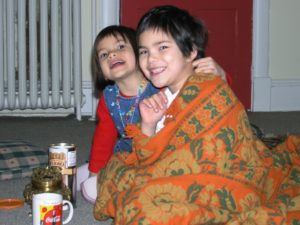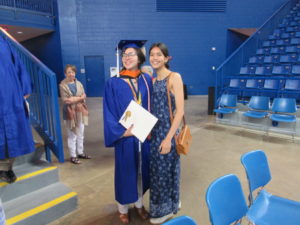The Med Tour
It was actually Bhutan I wanted to visit. In one of those strange synchronicities in my life, I had met Karma Lhatrul Rinpoche in Bali, a lama from Bhutan. One night an Italian friend Francesca rang me up to tell me we were having dinner in Sopa, a vegan restaurant in Ubud. That’s where I first met Karma, a lama from Bhutan.
I took Erin, a teacher from Philadelpia who was teaching in Bali, with me. When she sat beside Rinpoche, she could not repress her curiosity and wondered aloud, “How come you look so young? I expected somebody old.” Turned out that Karma was one of those adepts who remembered their past life when he was 3 years old and had trained in temples in India. He was from Bhutan. He promised to teach me phowa, translated as the transference of consciousness from this life to the next; but I will leave the rest of the story for later. (For more about him, you can google “Karma Lhatrul Rinpoche.”) Since our meeting, for two or three years thereafter I followed the adverts on the internet of retreats to the Buddhist kingdom. A company that sponsors Buddhist training with monks sent me a very promising invitation. It was rather expensive, but certain aspects of it were attractive. I offered to teach Tai chi chuan to get a discount but their counter-offer — $800 for 8 one-hour lessons — wasn’t enough to bring the price down to what I could afford with my small retirement pension. I continued to watch out for better offers, but nothing satisfactory came my way.

Later, the Mediterranean tour came through the internet as well. Lolit saw the ad one day and began to inquire about it. It offered a cruise starting from Athens, Greece, with stops in Santorini, Naples and Messina in Italy, Montenegro and Barcelona, Spain. It took at least 6 months to plan, from the sketchy outline of it to the details of accommodations, restaurants and events. Ava, 18, and Isabel, 21, were going to be on their summer vacation from college. Ava, a fencer (epee), was going to be a sophomore at Duke and Isabel had just graduated from U of Delaware and was going to matriculate at Penn. We thought of celebrating Isabel’s graduation in bio-medical engineering and Al’s 50th birthday. Just as the schedule was finalized, Isabel received a notice that she received a fellowship from the National Science Foundation that has a generous financial reward that would go towards her research and her doctorate program. There was more reason to celebrate. Eight of us were going: Al and Laura and their daughters Ava and Isabel, Norman and Jen, Lolit and I. We all contributed one way or another, in the finances and organization, of the family tour.
All of us did research into the different aspects of the trip: where to go and what to do in different places of interest. What was there in Messina or Montenegro? Was there a Filipino restaurant in Barcelona or Athens? What could we do together or individually in these places or on the boat? And of course there was the question, How much money did we need to cover our expenses? Everybody helped in a communal effort to find the best hotels and restaurants, places to visit. I offered to take Ava and Isabel to visit Delphi, the oracle of Apollo, on June 21 Summer Solstice, an auspicious day in the calendar. The sacred grove was my main place of interest in Greece (and in the whole trip) and I wanted my granddaughters to share the experience with me while the rest of the family stayed in Athens. (Sacred places or places with a certain energy have a particular attraction for me as you will read from my earlier posts.) Arrangements were made for a private guide to organize our accommodations and itinerary and to pick us up when we landed in Athens and take us to Delphi. It was important to decide what each one of us was interested in and to feel free to follow it. Lolit and I decided for ourselves what to do, since she had problems with mobility. Al reserved rooms at Divani, a hotel with a view of the Acropolis from its rooftop, and the whole floor of a BnB in Barcelona that had 5 bedrooms and 4 baths, a sauna, swimming pool, a kitchen, laundry, and a sitting room.

There was plenty to do on day tours and on Emerald Princess, the huge boat that had 18 stories of amenities. Just the same we brought reading materials – special features about the places we were going to visit, NatGeo articles, travel guides, novels, poems by leading poets of the different countries (Eugenio Montale for Italy, Juan Ramon Jimenez for Spain, CP Cavafy for Greece).
Without going into the details of the tour, I can mention that we went to the leading museums, famous buildings, restaurants and food courts and vineyards. In Athens we visited the Acropolis, in Barcelona the Sagrada Familia. I am not concerned here with providing a travel guide. For those who would like to take a similar tour, it is important to plan ahead, especially when one is traveling in a group. What I would like to focus on are a couple of subjects that occurred to me along the trajectory of the trip:
First, how much of the “Goddess Tradition” has survived at Delphi? Who were the women who were doing rituals in the sacred grove on Summer Solstice when I was there? What was it they were chanting or singing? I had no time to inquire before or during our visit. Our guide said that they were singing the ancient song to Apollo. For one reason or another, I had associated Delphi with the Goddess, I do not know why. The worship of the Goddess has been pervasive in different ancient cultures, sometimes hidden behind rituals, arcane texts or patriarchal traditions. The images come up in different forms, the scriptures suggest the original feminine influences, the continuum of history show the yin element in an otherwise yang arrangement. If you dig deep enough you’ll most probably come to the time when the Feminine was dominant or was the root of the tradition until the patriarchy took over in varying proportions. This is true in China, India and Egypt. To mention only one thread, you’ll find that beginnings of Daoism came from the Goddess worship and that Daoism itself is linked to the moon. If you study Greek mythology you’ll discover the existence of the Goddess in the sacred grove. Googling the information, I found out that in ancient time, probably before the site became associated with Apollo, it was the dominion of the Earth Goddess Gaea and later Pythia, the diviner and oracle. Anyway, I clambered up the path with Ava and Isabel on the second day of our pilgrimage. I saw the omphalos, the symbol of the navel, or the center of the world, and later on the pineal gland possibly because of its shape. I sat under the shade of a tree nearby and meditated while my pendants, jade bracelets and silver rings sat on an improvised altar in the sun. Ava and Isabel went higher on Parnassus and took photos of their exploration.
Second, what was the reaction of the public or the community to the apparently unique architecture of the genius Antonio Gaudi of Barcelona? To me, here was an original genius, childlike, daemonic, defiant. Was he ever persecuted or rejected? Gaudi, the magus and shaman, died a classic death: hit by a truck or a car, unrecognized as he lay in the street, without any ID or money, and then taken to the pauper’s hospital where he died in obscurity. One day I walked around his obra maestra and marveled at his creation. The next day, pushed in a wheelchair by my son, Norman, I was awed by the interior of the temple like millions who come from different parts of the world. How long did it take for him to receive the recognition and applause that he deserved? What humiliation and scorn did he have to endure before fame embraced his life?

A footnote to Sagrada Familia: looking at the dioramas on the façade of the temple, I asked the guide where Mary Magdalene was. She pointed to one statue of a kneeling woman covering her face with her hands as Jesus was brought down from the Cross. Mary has been represented throughout much of history as a prostitute when there is nothing in the Bible that even remotely suggests that; in fact, the descriptions of her – in Bethany and in Golgotha — show that she was closer to Jesus more than many Christians believe. In the same tableau, there was the bearded Joseph, another apostle, a rich man from Arimathea, possibly a relative, who took down Jesus’ body and wrapped it in linen cloth. All the other followers, including the disciples, were absent: they were all too scared to attend. I was wondering why there was no scene at the tomb or the garden, with Mary Magdalene and Jesus meeting for the first time after the Crucifixion, when Mary was bringing herbs to anoint Jesus. It was, to me, a critical turning point for it was at this juncture that Mary announced the resurrection of Jesus. The synoptic gospels picture her in very touching relationship to Jesus, her Lord and Teacher. Much more details are of course narrated in the Gnostic Gospels: Jesus kissing her often and teaching her subjects he did not share with the male apostles. The disciples did not believe Mary when she said she saw Jesus outside the tomb; they did not believe her either when she told them what she learned from Jesus. I think the role of Mary of Magdala, maligned for centuries by the Christian churches, should be re-defined and given more prominence for she was not only Jesus’ “companion,” “apostle of the apostles” and the apostle that “Jesus loved the most,” she was as well the first to announce the resurrection to the disciples. (The Gospel of Philip and the Gospel of Mary Magdalene.)
The Mediterranean tour was a great bonding for the family. “Enjoyed” is too weak a word to describe the experience. Everybody said it was priceless.
At this writing I bought a travel guide to Bhutan. I wanted to have something to look forward to and plan for. I do not think I will be moving around the country much. It will be a great gift if I could see Karma Lhatrul Rinpoche. But then with my diminishing mobility, I will probably choose a place and just stay put and do my practices. But with my gypsy roots in the Philippines, who knows.
How to beat a heat wave
A heat wave descended on the area mid-July: double to triple digit temperature from morning until night. Saturday Lolit and I decided to stay home and we did for a few hours. But there were errands around town. We drove up to the Arsha Vidya Gurukulam Ashram up north in Saylorsburg to inquire if they had a home for the statue of Shiva Nataraja, Lord of the Dance, that’s sitting in my study. The temple was on a lunch break and there was nobody I could talk to. We also wanted to get supplies from the grocery store: avocados and kefir (for me), mocha ice cream (for her) but by that time it was too uncomfortable outside. Albert dropped by to adjust the TV system. He had bought a different sound system, installed a DVD player and whatever was needed to make the TV more simple and easier to play for us luddite primitifs.We made plans to spend Sunday in NYC: Al, Laura, Ava, Isabel, Lolit and I will meet at the First Presbyterian Church in Frenchtown, NJ and then drive to the city for “The Farewell,” a Chinese movie about a dying matriarch. I brought 4 chilled bottled water in a cooler to hydrate ourselves. We had dim sum at Chengdu 2, an obligatory stop along the way: tendon cooked in hot oil and Sichuan pepper, congee with Thousand Year eggs, pork ribs in black beans, rice wrapped in lotus leaf, wide noodles with shrimp, chicken feet, tripe, fried rice, cucumber in sesame oil, etc. Lolit had bubble tea and red beans to take out.
It was sizzling in Manhattan. The traffic was light. Seems like most everybody went to the beach. The movie was very good. It just opened at Angelika Theatre on West Houston. We had seen several arty movies there a few times before. “The Farewell” revolves around “Nai Nai,” the grandma of the clan who has been diagnosed with cancer but has not been told about it. She is presumably dying, so the family tries all conspiratorial stratagems to keep the ultimatum from her. There is a segment where East-West differences are discussed. I am happy that more Asian movies are coming to town. After “Crazy Rich Asians,” there seems to be more openness to films by Asian directors beyond the Kung-Fu genre. If the movie is shown in your area, please try to see it. We stopped in Greenwich Village for bubble tea. Everybody seemed to be in the street having ice cream or waiting in line to sit in a café.
The plumber who serviced the water filter in the basement said he hates summer, especially when it is this hot. He will take winter anytime, even with its cold and snow. Exactly how I feel. I love the autumn foliage, too, and spring with the frozen creeks melting and the rabbits cavorting in the sun.